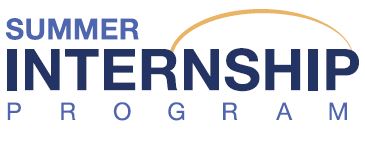About ASP.NET Training
This ASP.NET training class teaches experienced developers the C#.NET/VB.NET, ADO.NET skills they need to successfully build database-driven Web applications and Web Sites. It will guide how to build web-based enterprise applications using ASP.NET and Visual Studio. It will also give the comfort to the attendees developing the Web Services using .Net framework in Service-oriented Architecture.
ASP.NET Training Course Prerequisite
At least consistent object-oriented or object-based development experience in Java, C#, VB, or another modern object-oriented or object-based language. In addition, should know the basics of SQL and relational databases.
ASP.NET Training Course Objective
- Introduction to web technologies
- Web Forms Architecture
- ASP.Net and HTTP
- Web application developing using Visual Studio
- State Management and Web Applications
- ASP.Net Server-side controls
- Caching in ASP.Net
- ASP.Net application configuration
- Debugging, Diagnostics of application
- Connectivity with Database using ADO.Net/Entity Framework
- Data Access Controls
- Personalization and Security
- Introduction to Web Services
- Introduction to WCF
ASP.Net Training Course Duration
- 45 Working days, daily one and half hours
Introduction To Web Applications [Prerequisites]
Types of Applications – Web, Desktop & Mobile ApplicationsWeb applications with Web Server
Web Server role, about IIS, APACHE, and CASSINI
Web Browsers, Web Support Languages
Understanding http, TCP/IP, LAN, WAN & O/S role in web development
Why Scripting & its importance
Client-Side & Server-Side Scripting
OVERVIEW OF .NET (ASP.NET)
Intro to .NETDrawbacks of Current Trend
.NET Framework
Key Design Goals
CLR, CTS, MSIL, & Other Tools
Multiple Language Interaction & Support
Moving from Project to Assemblies…
Security Services and environment
Vista & IIS 6.0/7.0 & their requirements
Installing & Configuring VS.NET/.NET 2.0/3.0/3.5
AJAX(ATLAS) importance in Web applications
The need for AJAX & the Solution
ACTIVE SERVER PAGES .NET ROLE
Shifting from ASP to ASP.Net, Asp.net to web 2.0 (new)ASP.Net as Framework, Namespaces
ASP.Net – New Scenario in development process with IDE – VS.NET
Web Pages to Web Forms, HTML – ASP.NET, State management- an Important Objective
Understanding the ASP.NET Execution Scenario
C#.Net role in ASP.NET Development
ASP.NET/C#.Net – the Industry approach
HTML, HTML Controls, ASP.NET Controls
Client-side & Server-side Controls
Consuming HTML Client/Server Controls in WebForms
Consuming ASP.Net Controls in WebForms
Understanding the Rendering Nature of Controls Developing a Simple Startup Application
ASP.NET WEB FORMS – THE NEW TECHNOLOGY(BEGINNING)
Introducing Web Forms, Worker processWorking with Server Controls
Applying Styles to Controls, Themes, Skins etc
FORM
Page Directives and its useSeparating Code & Design
New Code behind Techniques
Implementing ASP.NET Server Controls
Types of ASP.NET & their need/render
Intrinsic – Validation – Bound – DataSource
Navigation – Login – Web Parts & AJAX.-as building blocks Asp.net.
https://i2.wp.com/nareshit.in/wp-content/uploads/2013/02/DevOps-Training-In-Hyderabad-chennai.png?resize=960%2C217
WEB FORMS – INTRODUCTION TO AJAX INPUT VALIDATION
Validating Form with Validation Controls of Asp.netUsing RequiredFieldvalidator control
Using CompareValidator Control Using RangeValidator Control
Using CustomValidator control
Create Server-side / Client-side functions for – CustomValidator Control
Group Validations & avoiding Validations.
Finally – Client Targets & ValidationSummary control
ADO.NET I – DATABASE SERVICES (V1.1/2.0/3.5)
XML, XML to HTML, XML & DatabasesXML Schema Definition Tool
Overview of ADO.NET/ XML Support in .NET
Connect/Insert/Update/Delete,Query data -using ADO.NET
Retrieve data with datasets
Data Adapters, Understanding Data tables
Build Data table programmatically
Filter and sort Data table, Data Relations
ADO.NET LINQ
ADO.NET – II
Parameters with Command ObjectStored Procedures with ADO.NET using –output parameters
Develop a Registration form using ADO
PRESENTING DATA USING ASP.NET BOUND CONTROLS (USING VB.NET/C#)
ASP.Net bound controlsDataSource Controls
Repeater & its uses.
DataBound and DataAware Controls
Bind data to Dropdownlist Control
Datalist control
DataGrid(1.1/2.0) Control
GridView & its importance in Development
GridView(Basic) – simple uses
GridView (Advanced) –Runtime Fields, Empty DataRows, NTier
FormView & DetailsView
ListView
AJAX ( ATLAS )
Introduction to Microsoft AJAX.(Code name ATLAS)XML Http object
Programming with XML HTTP Object
Advantages and Disadvantages of AJAX.
Features of AJAX.
MS Implementation of AJAX
ASP.NET ERROR HANDLING & DEBUG.
Error Handling & .NET RuntimeAvoid Errors before they occur
Structured Error Handling
Catching General Exceptions
Catching Specific Exceptions
Throwing Exceptions
Custom Exceptions
Page Level Error Handling
Application Level Error Handling
USER CONTROLS
Creating User ControlsAdding member to user controls.
Registering User Controls
Properties & Methods
Dynamically loading user controls
Master Pages
CONFIGURING ASP.NET APPLICATION
Web Application configuration-Advantages.New Configuration Model, ASP.NET Confn Tool
Web Application Machine Configuration
Global Assembly Cache, Strong Names VS2005.
Working with Assembly Info
Web.Config, Machine.Config
Process Model –System Configuration.
ASP.NET WEB APPLICATIONS
About Session & Application objectComparison between Session & Application
Using the Global.asax file
Managing Application State
Http Handlers
Application & Session Variables
Application & Session Events
CACHE SERVICES
Caching OverviewAdvantages of Caching
Comparing with Application & Session var’s
Page Output Caching
Page Data Caching
Fragment Caching
SECURITY
Security OverviewAuthentication & Authorization
Windows-based Authentication
Passport Authentication.(WebServices)
Forms-based Authentication
Memberships
Authorizing Users and Roles
User Account Impersonation
DEPLOYMENT
Deploying ASP.NET ApplicationASP.NET XML WEB SERVICES
Introducing XML Web ServicesDifferences Between DCOM / Remoting / Web Services
Asp.net Webservices.
Writing a Simple Web Service
Xml web services stack, SOAP,WSDL,UDDI,Sync an
Async calls
Web Service Type Marshalling
Using Data in Web Services
Using Objects and Intrinsic
HTML Pattern Matching
WCF
WEBPARTS
New concept in Web Apps.Advantages and Disadvantages.
Predefined/ user defined controls with webparts.
WINDOWS VISTA-NEW FEATURES
Gadgets/side bars.Office 2007
VS to VS.net tools for office.
MOBILE APPLICATIONS
Mobile formsMobile Environment – Today’s Need.
Needed Infrastructure
WAP, WML overview.
MS Mobile Explorer.
Open ware Simulators.
Line smart phones and Pocket PC Applications.

